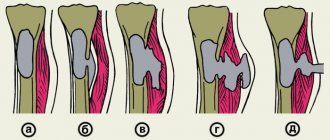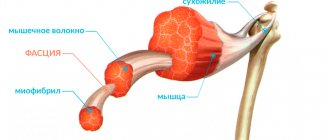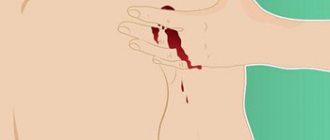A hallucination is an image that appears in a person’s mind without an external stimulus. The condition develops with severe fatigue, alcohol intoxication, and exposure to narcotic/psychotropic substances. Hallucinations can also be a symptom of certain mental and neurological diseases. What happens to consciousness, on what principle does a hallucination develop, and in what cases is it necessary to consult a doctor?
What are hallucinations, what are they?
Hallucinations are images that appear in a person’s consciousness. Most often these are symptoms of a psychological illness. A person may also experience auditory hallucinations. Healthy people can also experience hallucinations, but as a result of severe overwork of the body. If this condition is not uncommon for you, then you should think about treatment.
Free consultation right now!
Online consultation with a specialist on your issue!
License number: LO-77-01-019036
Which doctor should I contact?
Hallucination is not a separate disease, but a symptom that occurs when a particular organ is damaged, in most cases the brain. But in order to identify the real cause of the pathology, you need to consult the following specialists:
- Psychiatrist.
- Neurologist.
- Oncologist.
- Expert in narcology.
- Infectious disease specialist.
Hallucinations are an important symptom that indicates that the patient has certain disturbances in awareness of the surrounding reality. Patients are often embarrassed or afraid to talk about the presence of hallucinations, because they think that only people with mental disorders experience hallucinatory experiences.
IMPORTANT! This is a false, persistent belief; different specialists need to work with hallucinations. The fact is that hallucinations can occur due to the presence of a neoplasm or infectious pathology.
Therefore, make an appointment with a specialist from our center - a psychiatrist, neurologist, oncologist, narcologist or infectious disease specialist to find the root of the problem and eliminate the symptom!
Sign up
Symptoms and signs of hallucinations
To explain it in simple terms, hallucinations arise as a result of a malfunction of any system responsible for the perception of the surrounding world. So the patient may seem to have some visual objects or his auditory perception may be distorted. A psychiatrist diagnoses hallucinations.
Most often, at the initial stage, such hallucinations occur with the eyes closed, when a person goes to sleep. This is preceded by frequent abuse of alcohol or drugs.
Hallucinations can be true or false. The difference is this: true hallucinations - a person is confident in their reality, and does not question the fact that they do not exist in reality, and this is the result of a failure in his perception system. The patient sees such phenomena in the world around him.
False hallucinations arise in a person’s head. For example, a patient hears voices in his head; he may believe that someone is communicating with him mentally and influencing his condition and decisions. Such conditions accompany schizophrenia.
general characteristics
There are true and false hallucinations.
True hallucinatory images have the qualities of objectivity, integrity, structure, and constancy. They are assimilated to the real situation, that is, they interact with existing objects, for example, an ax lies on the table. Pseudohallucinations are present in a conditional, imaginary space and often do not have a clear structure. Common options are voices in the patient’s head or visual images hovering in the air. The origin of pseudohallucinations is interpreted by the patient as artificially caused by another person. According to the content, hallucinations can be elementary, simple, or complex. Elementary ones have incomplete objectivity, are unimodal, are represented by individual non-speech sounds and simple images like causeless flashes. Simple hallucinatory phenomena are objective, static, sometimes move, but do not change shape. They are unimodal - they use one analyzer. Complex hallucinations are formed with the participation of several analyzers; the images are dynamic and often have semantic content. Example: the smell of poisons combined with voices behind the wall, deciding to poison the patient.
Hallucinations are varied - single and multiple images, randomly arising or connected by a common plot, neutral in relation to the patient or frightening, commanding, commenting, amusing. According to the key analyzer involved, they are divided into visual, olfactory, auditory, tactile, gustatory, visceral, motor, complex. Regardless of the cause and modality, the general characteristic is that the images are always perceived by the patient as really existing.
Types of hallucinations
To understand what to work with, hallucinations must be classified into certain types.
It must also be said that all hallucinations are divided into 2 types.
- True hallucinations - a person perceives false objects in the world around him and believes that they are part of reality.
- False - a distortion of reality occurs in the patient’s head. imply
Hallucinations can be simple or complex. Those. the malfunction may affect one or more sensory organs. And the more organs that are affected by hallucinations, the more difficult the treatment becomes.
Visual hallucinations
As a result, false images of objects, people, living beings, and various objects appear in the human mind, but the patient perceives them as part of reality. In addition, a person sees a certain sequence of actions (as if some plots of a film) and can take an active part in them. This happens after an overdose of alcohol, drugs, or taking serious medications incorrectly. Such visions haunt a person.
Auditory hallucinations
A person hears voices, various sounds, hears his name or being told to do something, but only he hears it; in reality, it does not exist. Auditory hallucinations are detected in acute mental illnesses, such as schizophrenia.
Sometimes they can be caused by an overdose of various substances, similar to visual ones.
Olfactory hallucinations
They are the least common. A person smells non-existent odors. Occurs after brain injury or schizophrenia. They may also appear after the passage of an infectious disease.
Taste hallucinations
The patient experiences sharp and unpleasant sensations in the oral area, resulting in a refusal of any food.
Tactile hallucinations
A person feels the presence of an object (creature) on the body that does not exist; there may also be a sensation of the object moving around the body. In this case, a feeling of sharp heat or cold occurs. The patient experiences unpleasant tactile sensations on the body. Severe pain or scratching.
Hypnagogic hallucinations
They appear when a person (and most often a healthy one) falls asleep. Awareness appears in the form of masks, plant monsters and any other physical objects. Such hallucinations are a harbinger of an imminent mental disorder and a reason to consult a specialist, or call a psychiatrist at home.
Write to WhatsApp
COST OF TREATMENT
Diseases accompanied by hallucinations
First of all, of course, it is worth noting that the presence of hallucinations is one of the main positive signs of schizophrenia. The most common in schizophrenia are auditory hallucinations (they occur in approximately 75% of patients). This disease is also characterized by hallucinations of sensations (tactile, olfactory, auditory). Olfactory hallucinations also appear in temporal lobe epilepsy.
Visual hallucinations also occur in schizophrenia, although relatively rarely. D. Goodwin et al. (1971) believed that the percentage of patients with schizophrenia suffering from such a disorder is only 5%. In most cases, these hallucinations are symptoms of organic brain damage, delirious confusion, alcoholic or intoxication psychosis.
If we once again analyze the causes of hallucinations mentioned above, we can conclude that this disorder may indicate brain damage, tumors, various dysfunctions of the central nervous system, and intoxication of the body (typical of alcoholism and drug addiction).
Causes of hallucinations
Let's figure out why hallucinations can occur. Medical experts identify the following reasons:
Excessive and systematic consumption of alcohol. Drug use. Use and overdose of psychostimulants. Schizophrenia. Brain damage. The influence of psychosis. Syphilis. Age. As a result of the aging of the body, changes occur that entail a failure of the sensory organs. Frequent stress, pessimism, anxiety. Hallucinogenic mushrooms. Neoplasms of the brain. Infection of the body. Epileptic syndrome. Heart disease. Atherosclerosis. Prolonged insomnia.
Causes of hallucinations in older people
In older people, the development of hallucinations may occur due to age. This is the result of age-related changes in the organs of perception. Such people are characterized not only by auditory hallucinations, but also by visual and gustatory ones. Elderly people with this disease begin to complain about strange odors in the room, an unpleasant taste in the mouth, etc.
How to get rid of auditory hallucinations
In addition, often the answer to the question: “How to get rid of auditory hallucinations?” The psychologist also knows. Contacting him will be advisable if this problem is caused by violence, psychological trauma, severe fear or puberty in adolescents.
If such hallucinations are suspected in children, parents should be able to distinguish this problem from the manifestation of a child’s violent imagination or the child’s retelling of his dreams. And parents of teenagers, if they have sound or other hallucinations, should exclude the abuse of alcohol, drugs and other psychoactive or toxic substances.
What to do if you have hallucinations?
Today, there are a huge number of methods for treating hallucinations, and different methods are aimed at eliminating different types of hallucinations. It must be said that therapy is often aimed at treating the cause of hallucinations. But, unfortunately, it is not always possible to eliminate the cause of the disease. It is necessary that hallucinations or the disease that caused them be diagnosed by an experienced specialist. Do not be shy or wait for an exacerbation; you should consult a doctor immediately.
Get a consultation at the psychiatric department of the KORSAKOV clinic.
How to identify hallucinations?
Diagnostics involves determining whether there is a difference from the illusory deception that a healthy person may have. It is necessary to look at the general condition and behavior of the patient, check whether he has delusions or other mental illnesses. Analyze his facial expressions, gestures, check whether he has a feeling of anxiety, and based on the overall picture, draw a conclusion about the person’s condition. This way you can understand whether a disease exists, and if so, determine the degree.
How to deal with hallucinations?
The first step is to diagnose the cause of the hallucination and possible diseases. Next, you need to prescribe a course of appropriate treatment.
At the diagnostic stage, an anamnesis is collected, it is clarified what exactly the patient sees, hears and feels. A thorough examination of what is visible, audible, and felt is carried out, an examination is carried out and a method of treatment is selected. The method of monitoring and caring for the patient is also selected.
Online consultation with a specialist
regarding your question!
License number: LO-77-01-019036
Impact of extreme situations
Any critical situation, especially one associated with a risk to life, always contributes to the emergence of a number of group mental reactions.
One of the stories says that during a sea voyage on a ship, a cook died. According to maritime traditions, his body was given to the sea, and the very next night after his death, several passengers saw the body of the deceased walking along the waves after the ship. This provoked panic on board, but in the morning they found a board tied to the railing. It was this board that the vacationers mistook for the body of the cook. This event well characterizes hallucinations caused by a strong emotional state caused by common and identical experiences in the marine environment.
Newspapers and the Internet often described cases where a group of children and teenagers, walking through abandoned construction sites and buildings, ran out of there because of the horror in the form of a ghost pursuing them in the form of a watchman or a dead person. There is also a known case when a rescue team carried out an operation to extract a small child from a car that had overturned into the water, and at the same time heard women’s cries for help and rescue.
Treatment of hallucinations
The method of treatment depends on what the doctor finds out at the diagnostic stage. One of the methods for eliminating the pathology itself may be chosen. If it turns out that the cause cannot be eliminated, then therapy is aimed at eliminating the symptoms, that is, the hallucinations themselves. If the disease develops as a result of the use of any drugs, then they are canceled.
In case of poisoning with alcohol or drugs, cleansing of the gastrointestinal tract is prescribed. The patient will need rest and care.
A course of psychotherapy can help cure hallucinations. Neurometabolic therapy and restorative medicine techniques are used.
Auditory hallucinations after alcohol binge
After an alcoholic binge, all kinds of hallucinations often appear, including auditory ones. Moreover, they are often very dangerous and can lead to very unpleasant or terrible consequences. Indeed, in such a state, the alcoholic experiences various fears, cannot sleep normally and react to the surrounding reality. This phenomenon is caused by exhaustion of the body by prolonged consumption of large quantities of alcoholic beverages, often low-quality or surrogate ones. Many alcoholics in this state may hear distinct voices that tell them to cause significant harm to their own health or commit some other illegal or dangerous act. Therefore, often after a few days after drinking, many drinkers commit suicide, murder, or become guilty of serious road accidents.
Non-hallucinatory forms of the disease
Almost all types of schizophrenic disorder are accompanied by productive symptoms, namely delusions and hallucinations. They are most clearly presented in the paranoid form, in which they act as leading signs. It is even divided into types depending on the predominance of one of 2 of them: hallucinatory and delusional.
Hebephrenic and catatonic forms are also accompanied by hallucinations. Their severity depends on the phase of the disease and its severity.
But still, there is a type of schizophrenia without delusions and hallucinations. The simple form of the disorder is characterized by gradual development. Periods of exacerbations, delusions and hallucinations are absolutely not typical for her. Its course is dominated by negative symptoms: lack of will, emotional poverty, apathy, detachment from other people.
Such an exception from the overall picture of the disorder once again proves the complexity and unpredictability of the disease.
Pseudohallucinations
The concept was first described in 1844 and called mental hallucinations. They are also called apperceptive.
They resemble fantasy images, lack spatiality, and appear as if outside the zone of perception. The patient understands that they are unrealistic and therefore is not too willing to talk about them.
This phenomenon is characterized by 3 main features:
- inward orientation - such hallucinations are born in the patient’s subjective world. They are perceived not by standard analyzers, but, for example, by the inner eye;
- high significance. Patients with schizophrenia experience pseudohallucinations much more vividly and realistically than true ones. They are quite intrusive, and it is difficult for a person to dull them; they constantly pursue him no matter what he does;
- artificial creation. Since such hallucinations persist for quite a long time and are beyond the patient’s control, he believes that these images were inspired by someone’s external influence. They are introduced into his brain using special video and radio devices or arise through the influence of magnetic fields and magical forces.
There are several types of pseudohallucinations, the most common of which are visual and auditory.
If these are visual visions, then the person gets the impression that he sees them not with his eyes, but with his mind. They are born with clear consciousness and are easily distinguished from real hallucinations, devoid of objective sizes and shapes.
Here is an example of visual pseudohallucinations described by a man with schizophrenia. He saw a revolver in his head, ready to fire at any moment. The pistol circled in his head, changing its location. The man was in a state of panic. He believed that his enemies could pull the trigger of the gun in his brain using a remote control and then his head would simply be blown off. His pursuers create such visions specifically to enslave him and force him to obey them.
A feature of auditory pseudohallucinations is the unusual localization of the voice. It can come from the stomach or any other part of the body, and can be heard “from another planet.” The voices are more like echoes, echoes, or “the sound of thoughts.” They can talk among themselves or be imperative in nature, that is, give orders. The voice can be single. Pulling or driving thoughts are also typical.
Auditory pseudohallucinations are characterized by the Kannabikh-Liozner symptom, when the patient hears calls from strangers in a diminutive form.
The following types are much less common:
- motor – imposing any movements;
- olfactory, gustatory – unpleasant, “artificially created” smells and tastes;
- speech motor – words come out without the patient’s consent. The tongue and lips work without his control.
Mixed pseudohallucinations are often encountered in people with schizophrenia. For example, one patient claimed that secret agents were watching him and transmitting information to him through an electric current. They shape his thoughts, present him with obscene images.
Apperceptive hallucinations are similar to memories, only the latter arise during the conscious work of the psyche, and pseudo-visions appear independently of human will and do not obey it. It seems that these memories are imposed on the person. Sometimes it is very difficult for the patient to understand and accept them.
Some argue that pseudohallucinations are similar to visions in the astral plane. Logic and the brain frantically try to find an explanation for them. A person begins to perceive his surroundings in a completely different way and an unprecedented meaning is revealed to him. Sometimes logic can explain this. The worst thing is when she can’t cope with it, starting to rush around chaotically in search of answers.
Despite the fact that pseudohallucinations do not correspond to images of reality, for patients they are completely real, they simply come from another dimension. Conversely, true hallucinations sometimes appear in an unusual form: a devil or a green man. But the patient is sure that they exist in this reality, in this reality.
Compare:
| Categories | True hallucinations | Pseudohallucinations |
| Compliance with existing reality | Compliant | Does not match |
| Appearance time | More often in the morning | Any time of the day |
| Characteristic | They have clear features and location in space. Are part of the environment | They don’t have specifics, they don’t have mass or volume. Atypical features, location. |
| Dependence on external influences | They appear in reality. Sometimes they are mistaken for really existing images | The feeling of being placed in the brain under someone's control. |
| Behavior | There may be inappropriate behavior | The patient often does not exhibit “strange” behavior. But his state is depressed, he is irritated, hyperexcitable. |








